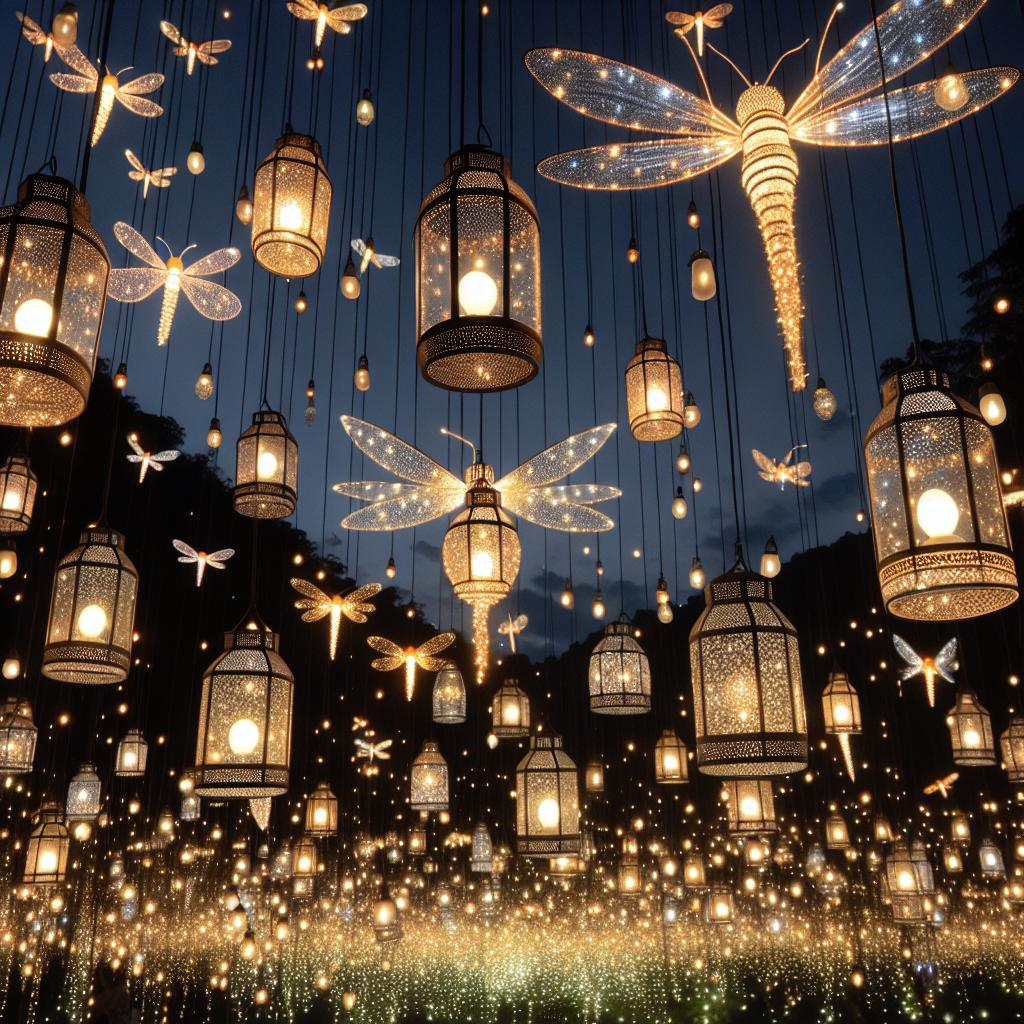
Divine Illumination: Unveiling the Spiritual Journey Through Firefly Lanterns and LED Lenses
Published: 13 April 2024
Firefly Lanterns: Nature's Design Inspiration for LED Lenses
Introduction
In the field of design, nature has always been a rich source of inspiration. One fascinating aspect is how organisms generate and manipulate light. Bioluminescent creatures like fireflies and octopuses have evolved efficient ways to produce light using chemicals. Additionally, certain butterfly wings reflect light in stunning iridescent colors, while moth eyes possess an ingenious anti-reflective surface. These natural designs have not only inspired pigment creations but also sparked interest in light transmission efficiency.
Fireflies: Masters of Light
Contrary to their name, fireflies are actually beetles. They utilize bioluminescence to emit light from their lower abdomen. The glow serves as a warning to predators of their toxic flesh during the larval stage, and as a means to attract mates during adulthood. This bioluminescence is produced by a chemical called luciferin, found in specialized cells known as photocytes. The process requires the presence of luciferase, magnesium, oxygen, and ATP energy production.
Efficient Light Transmission
The efficiency of firefly light transmission is not limited to biochemistry alone; it extends to the structural design as well. The lanterns of fireflies consist of three layers: the cuticle (window), photogenic layer (light-producing), and dorsal layer. The photogenic layer emits light in all directions, which either passes through the cuticle directly or reflects off the highly reflective dorsal layer. This reflectivity is achieved through a finely-layered structure called a dielectric mirror.
Surprisingly, even the window itself exhibits remarkable fine structure. Normally, when light passes through different materials, some of it is lost through reflection. However, firefly lantern cuticles possess an intricate structure that minimizes this reflection through a process called optical impedance matching. These cuticles feature tiny ridges measuring 150 nanometers in width, 110 nm in height, and spaced at a distance of 250 nm. These dimensions have been optimized to transmit the maximum amount of light at the firefly's peak wavelength of 560 nm (yellow-green), which coincidentally aligns with our eyes' peak sensitivity to the same color.
LED Lens Inspired by Firefly Lanterns
Researchers at the Biophotonics Lab of the Korea Advanced Institute of Science and Technology, led by Ki-Hun Jeong, have drawn inspiration from firefly lanterns to create an innovative LED lens design. By duplicating the intricate structure of firefly lantern cuticles, they were able to increase light transmission by 3% compared to a smooth lens. While this may seem like a small improvement, it is a significant step towards maximizing energy efficiency in high-power LED packages. This biological inspiration opens up new possibilities for enhancing light extraction efficiency.
Why This Matters:
The study of nature's designs can offer valuable insights for human technology and innovation. By replicating the intricate structures found in firefly lanterns, researchers have been able to enhance the performance of LED lenses. This not only contributes to energy efficiency but also showcases the incredible design ingenuity present in the natural world.
Think About It:
The efficiency and complexity of natural designs raise important questions about their origin. Evolutionary explanations often attribute these features to millions of years of blind processes. However, the practical research undertaken to duplicate these nanostructures highlights the need for intelligent design principles. If human designers require brilliant design to replicate nature's creations, how much more extraordinary must those original designs be?
In conclusion, firefly lanterns serve as a remarkable source of inspiration for designers seeking to improve LED lens efficiency. The intricate structures found in their cuticles and dorsal layers optimize light transmission and minimize reflection loss. By mimicking these designs, researchers have successfully enhanced LED lens performance. These findings challenge conventional evolutionary explanations and underscore the need for intelligent design principles to truly appreciate the wonders of nature.
